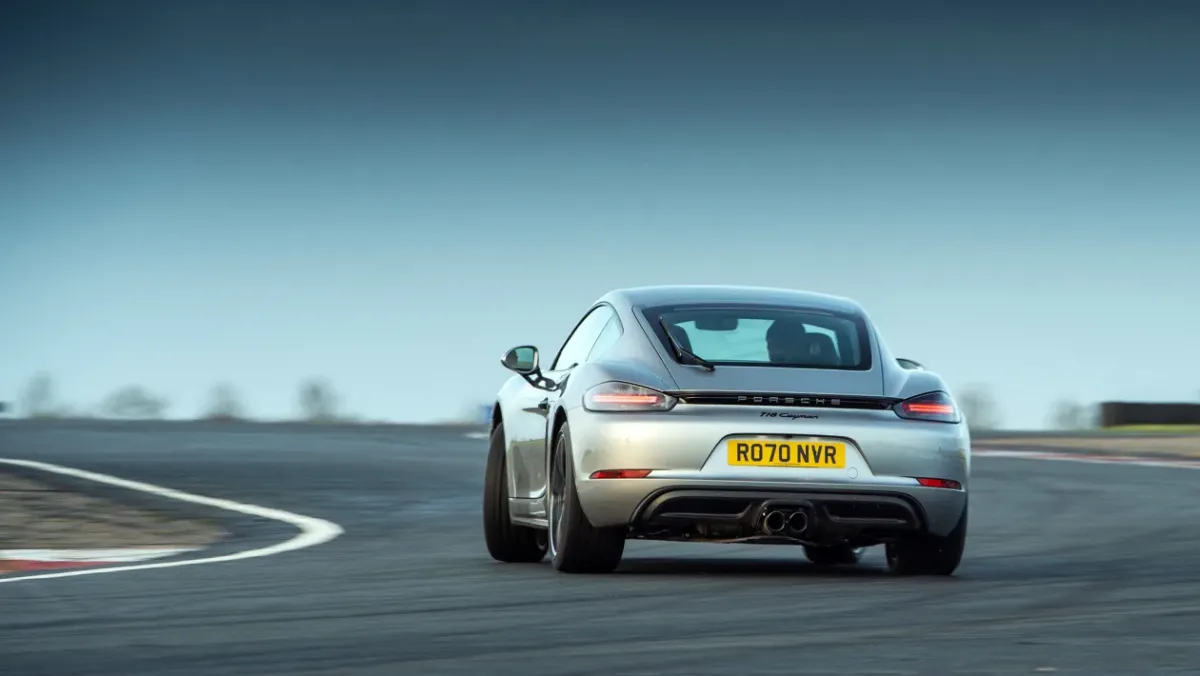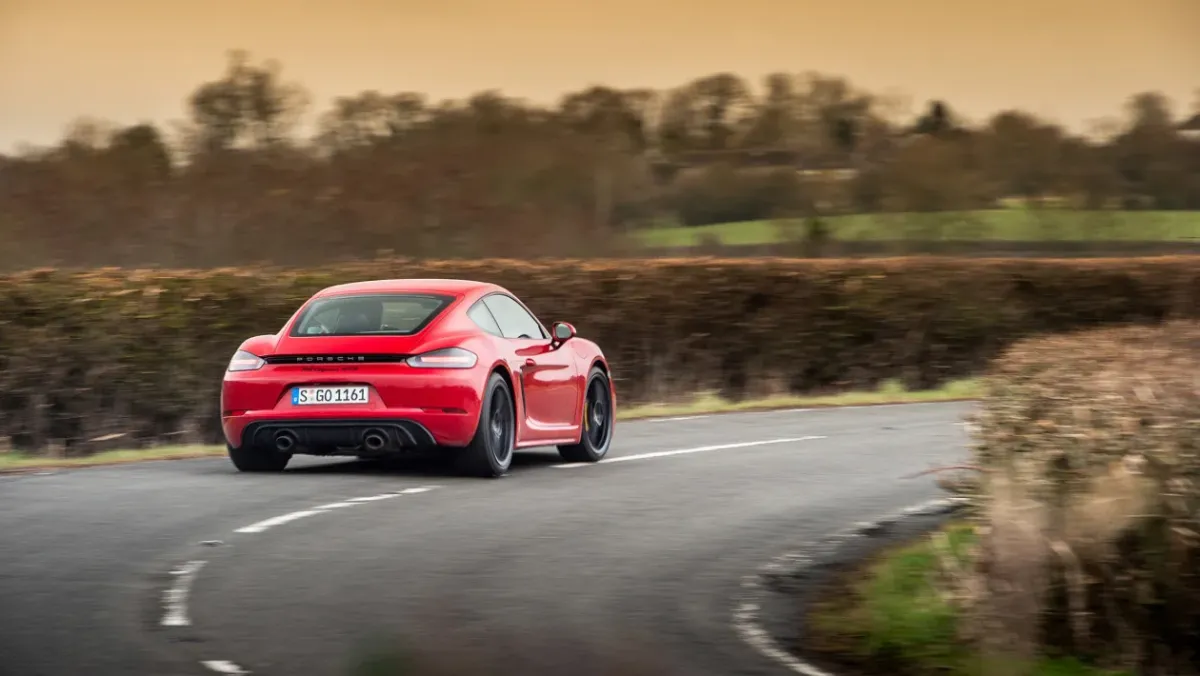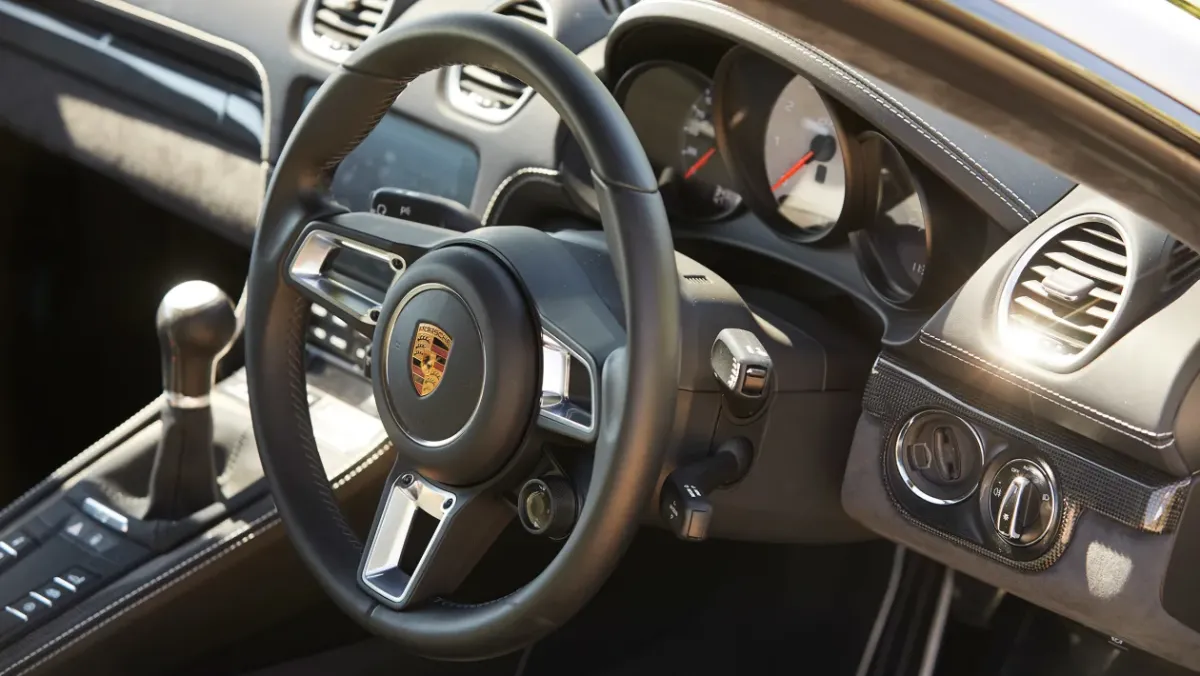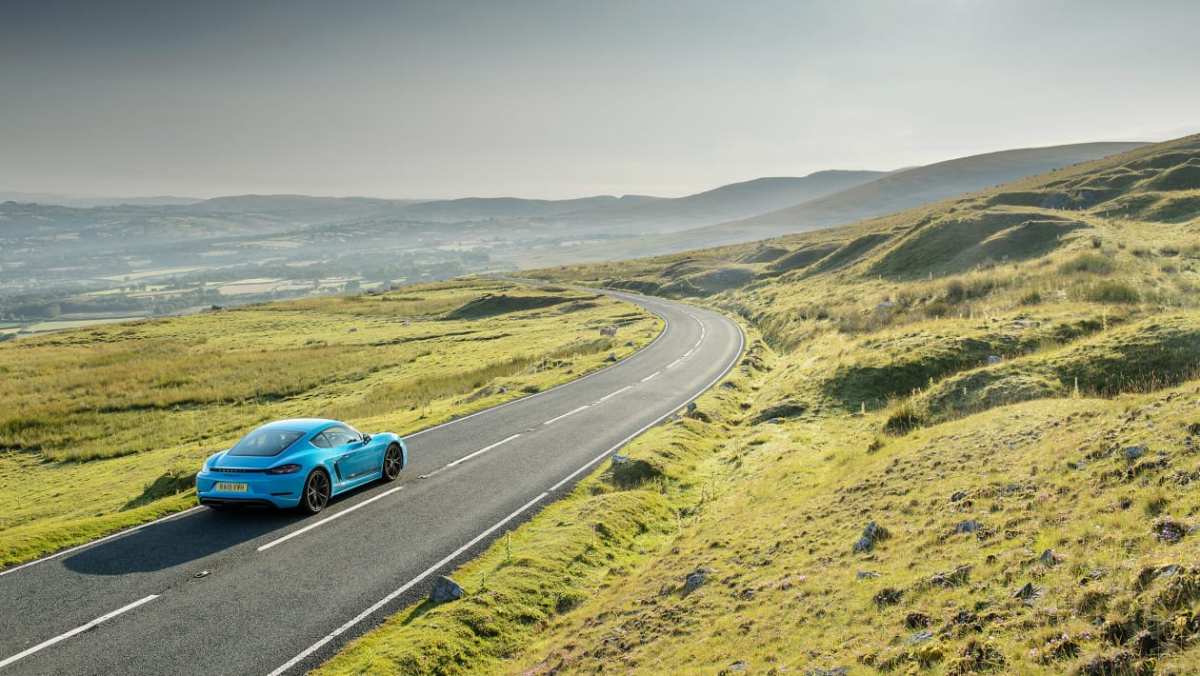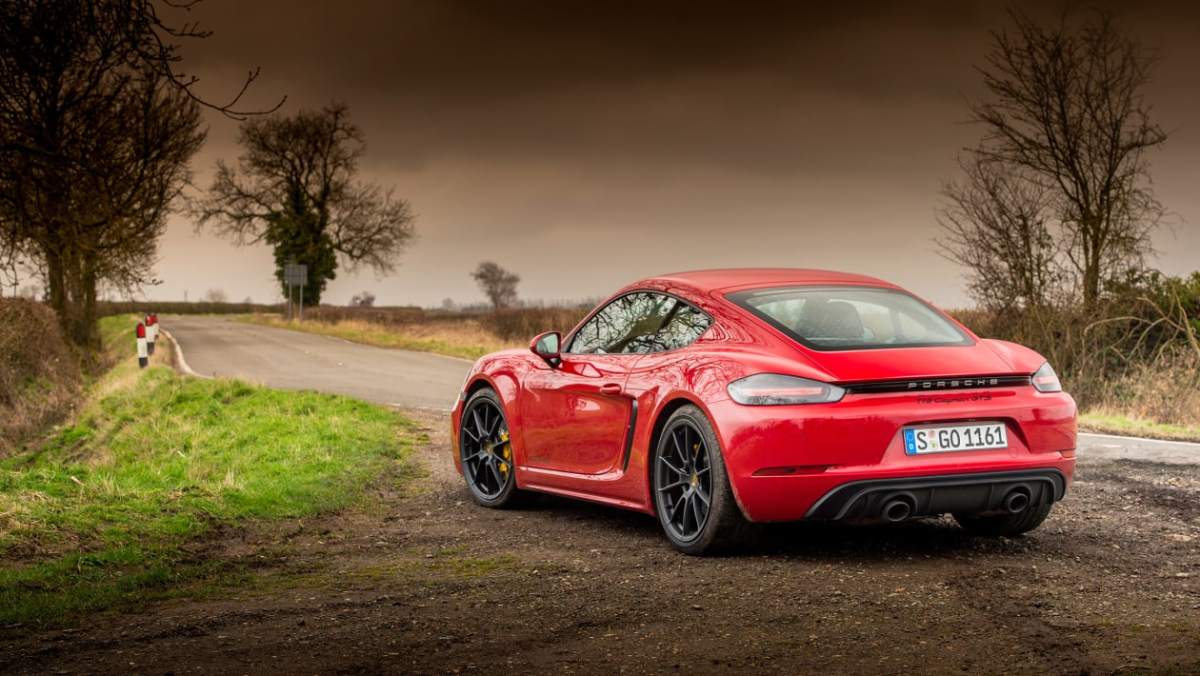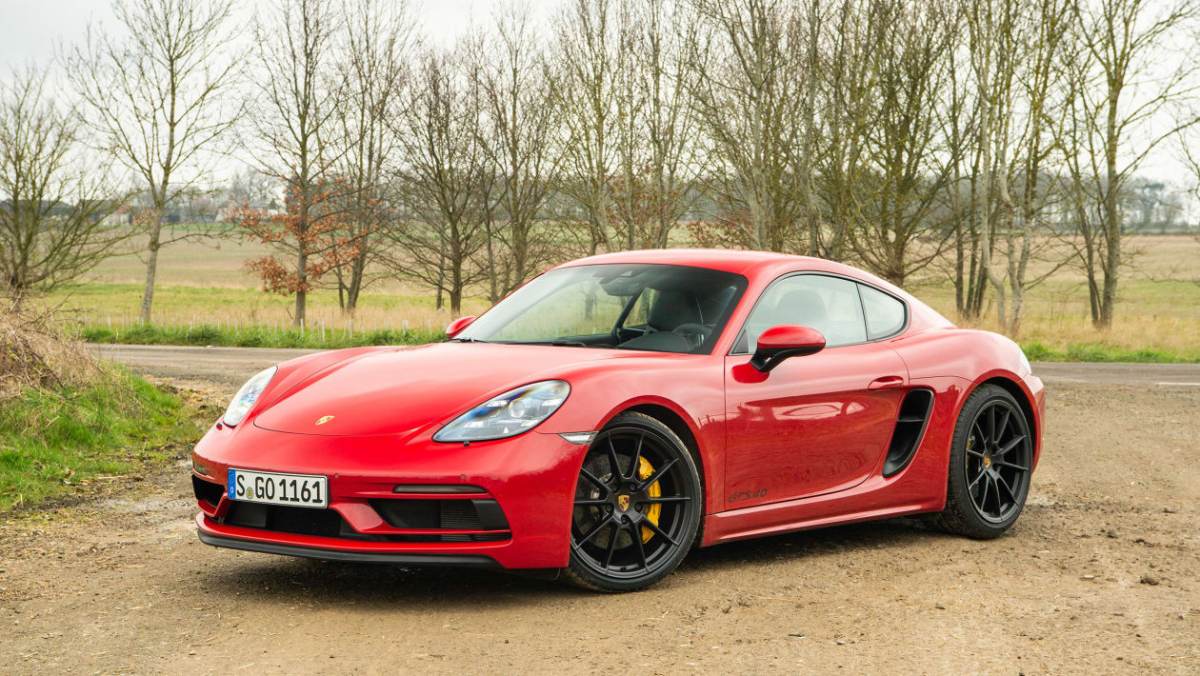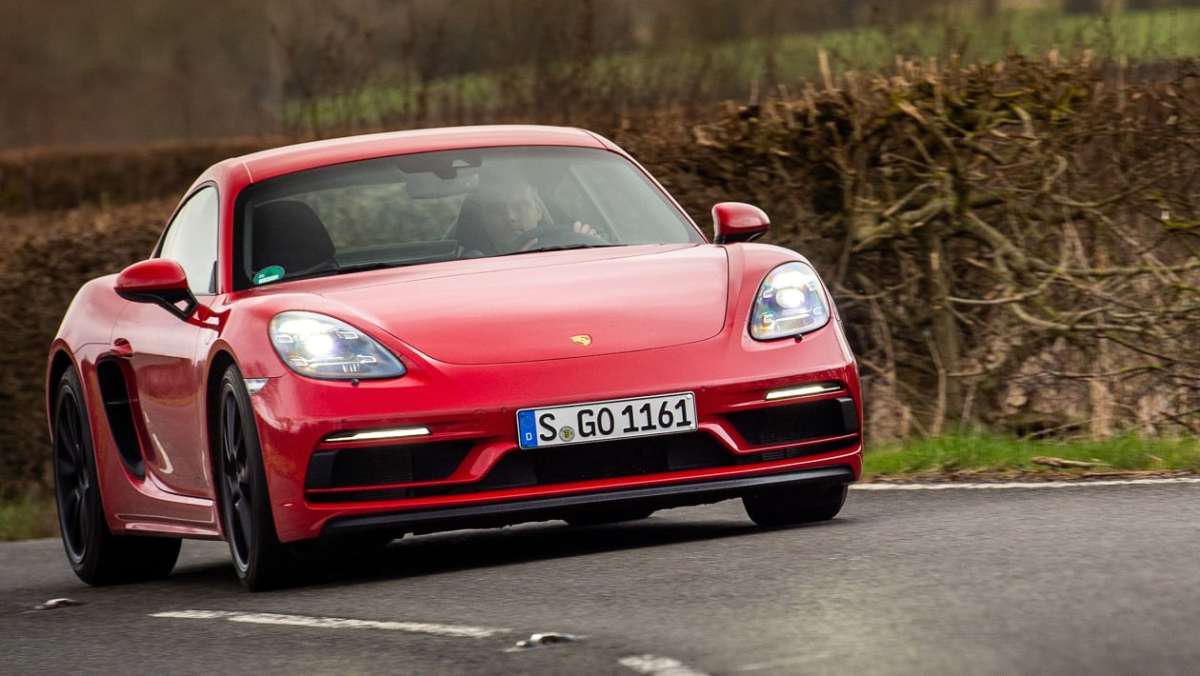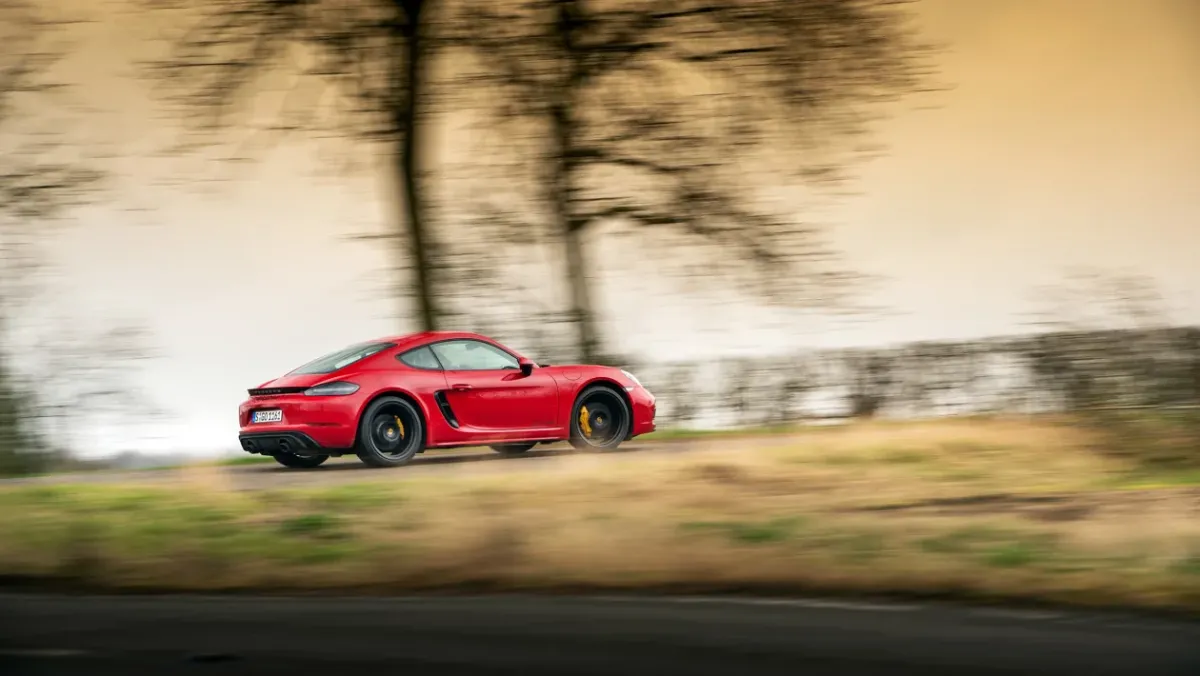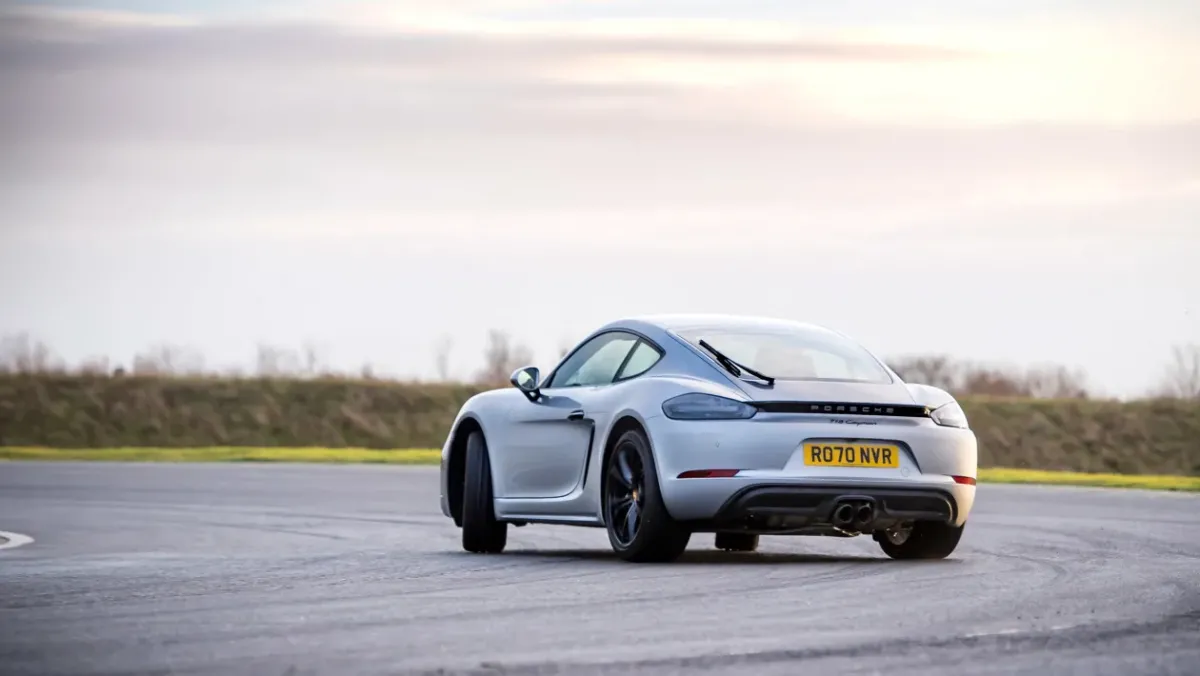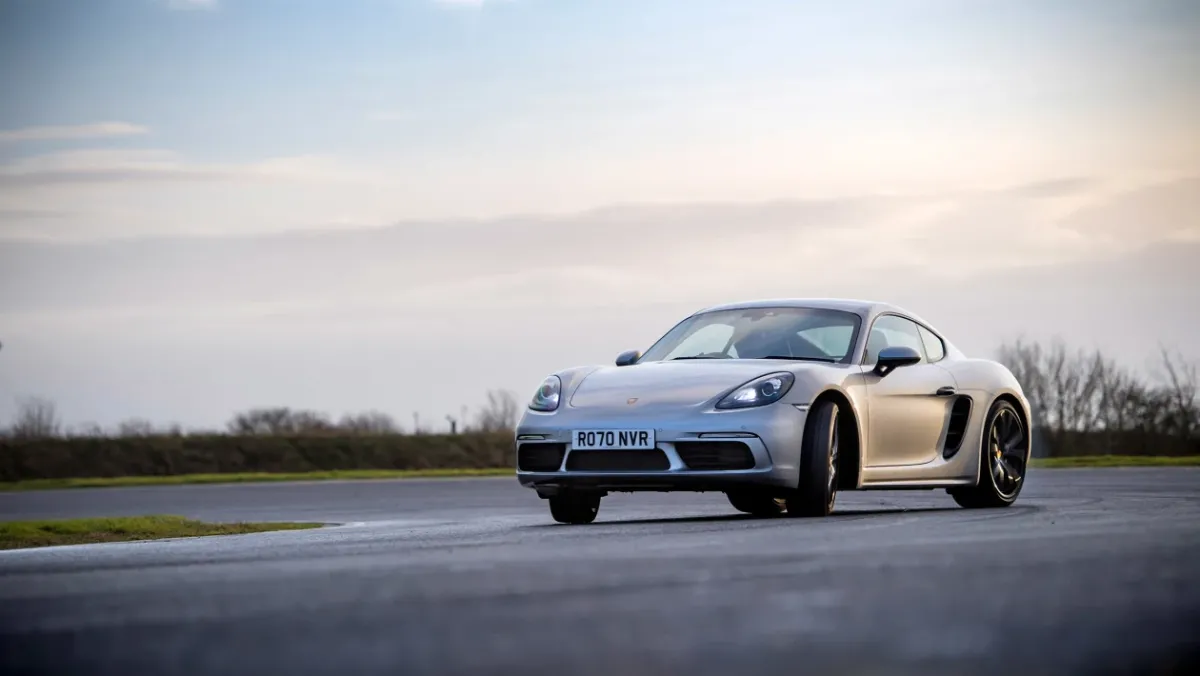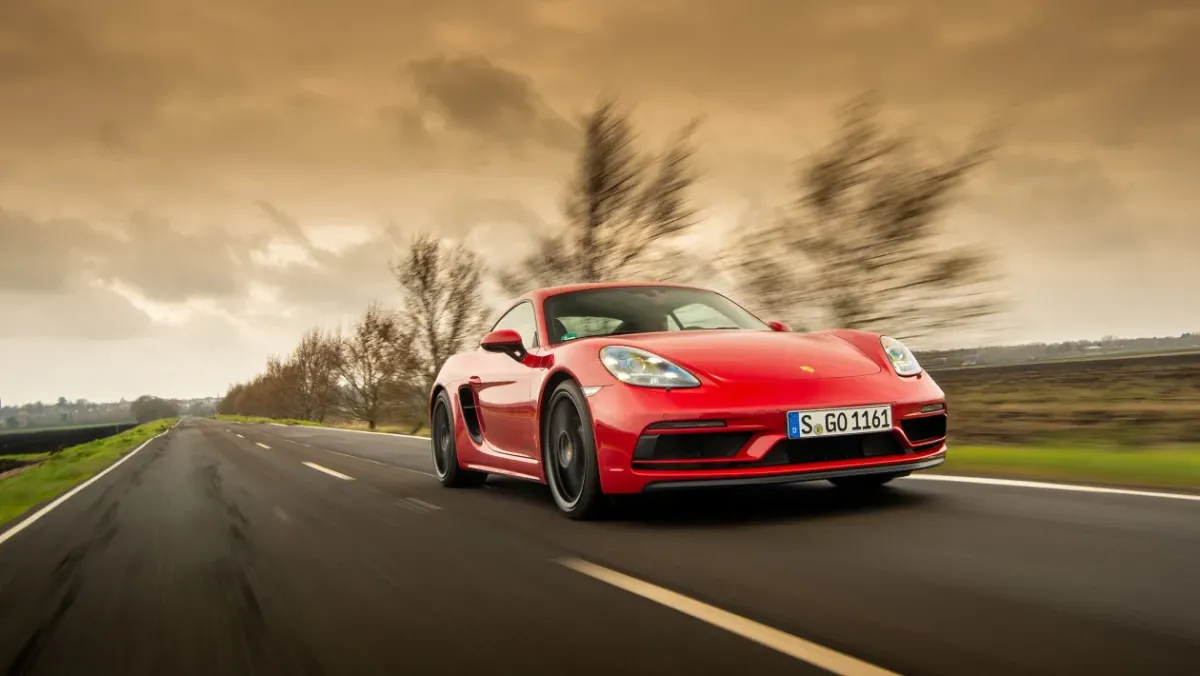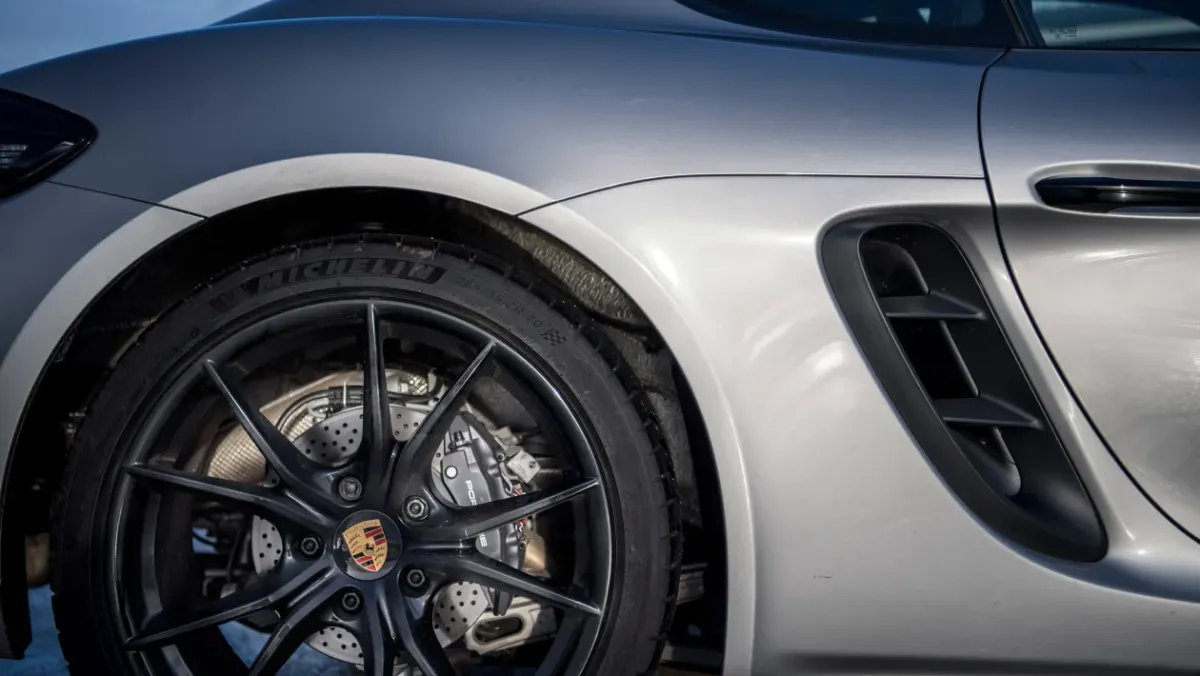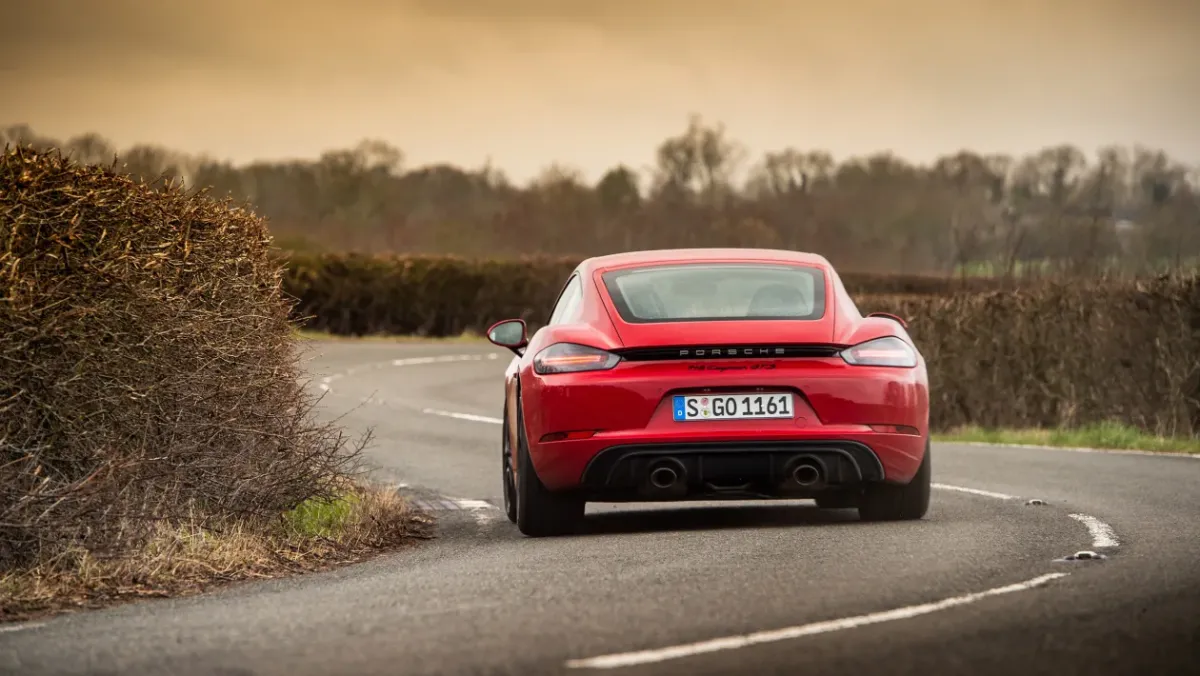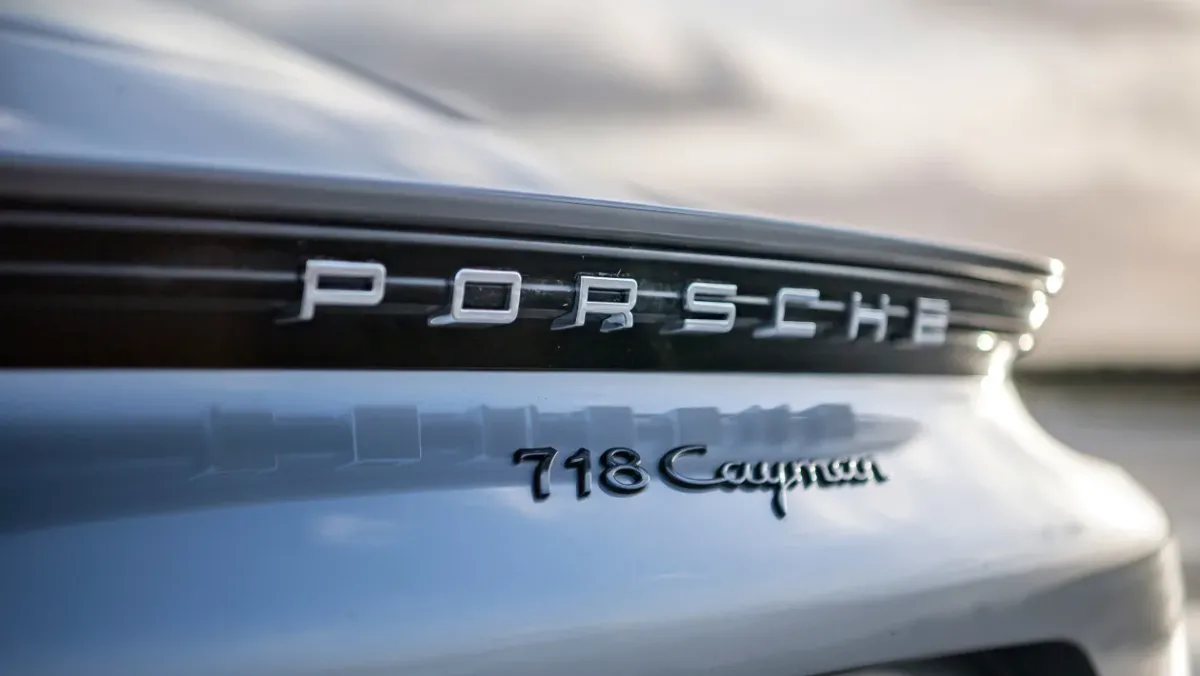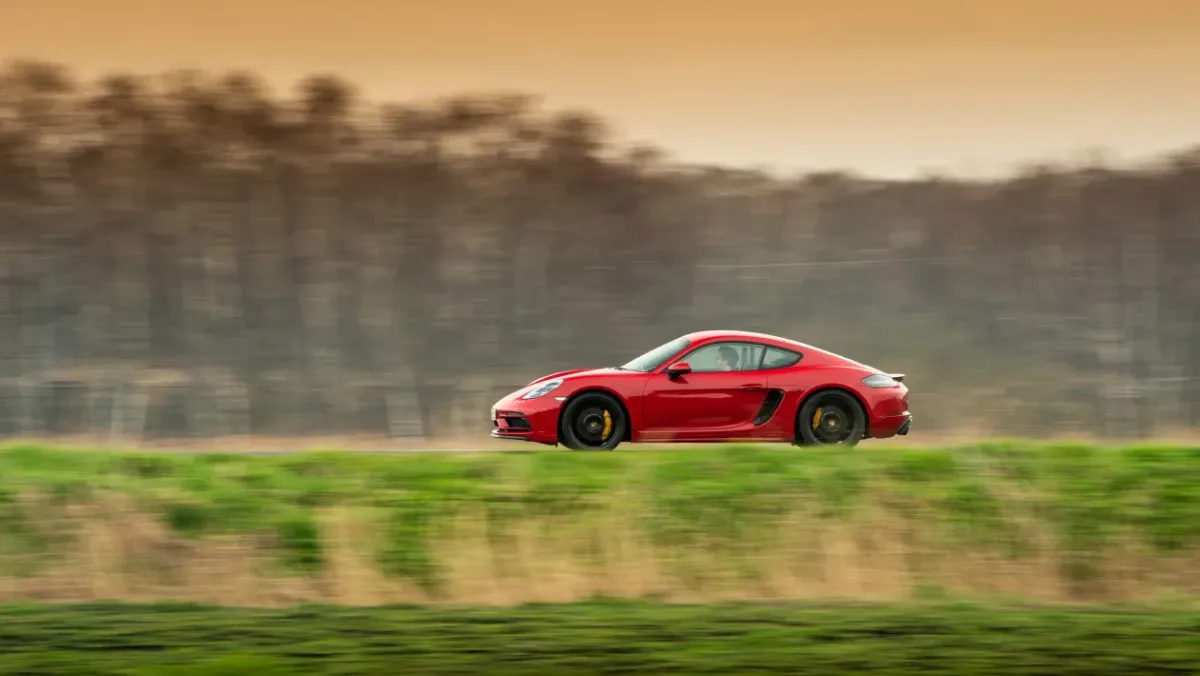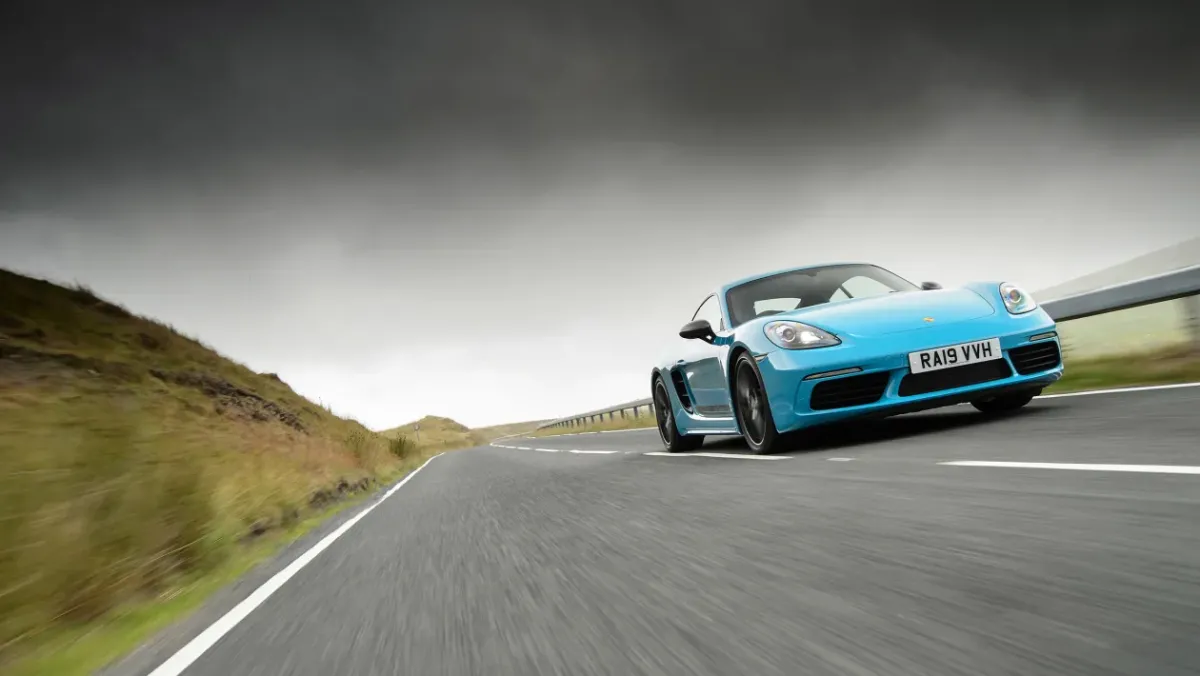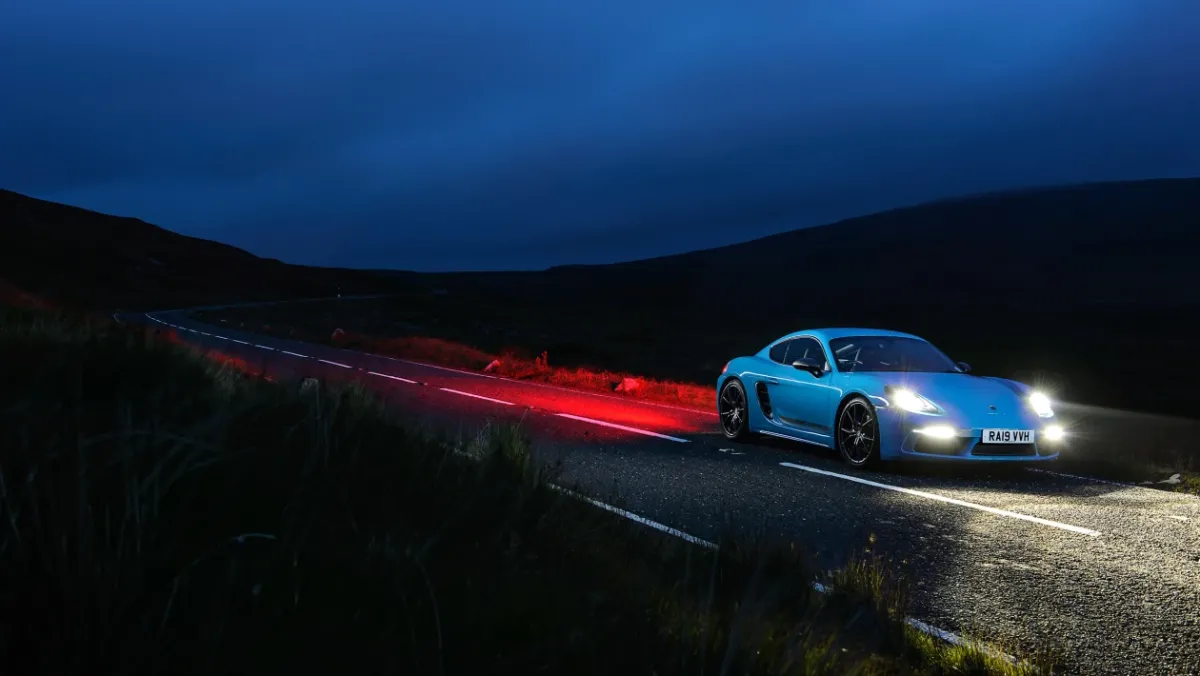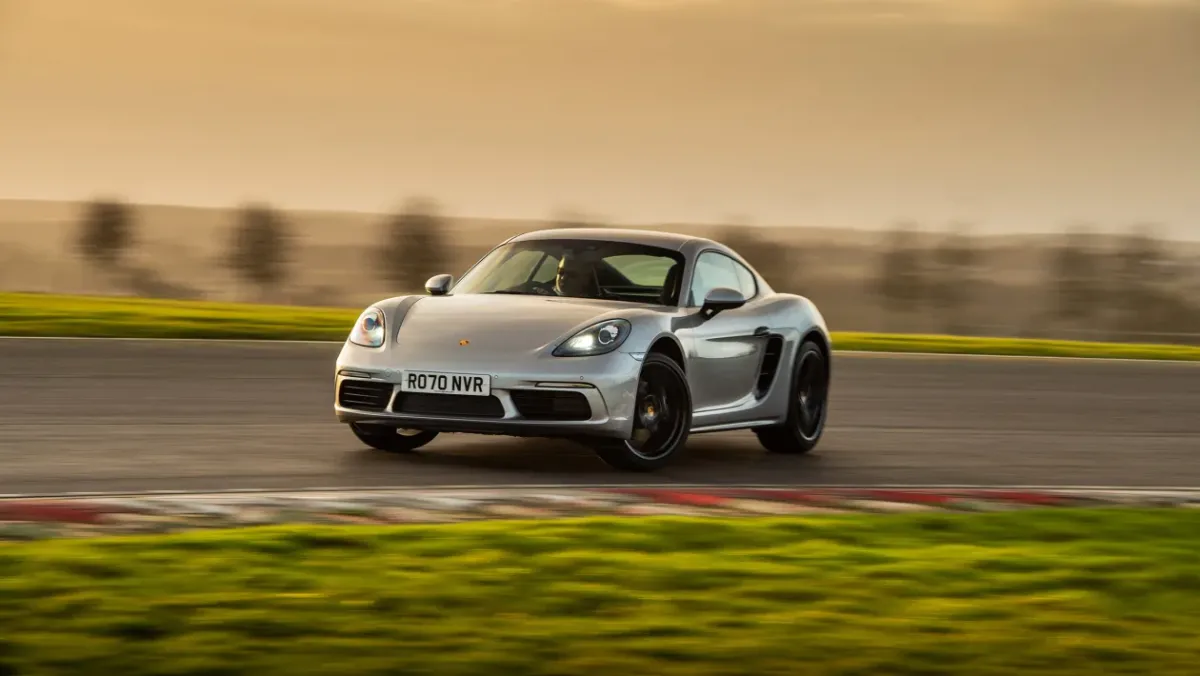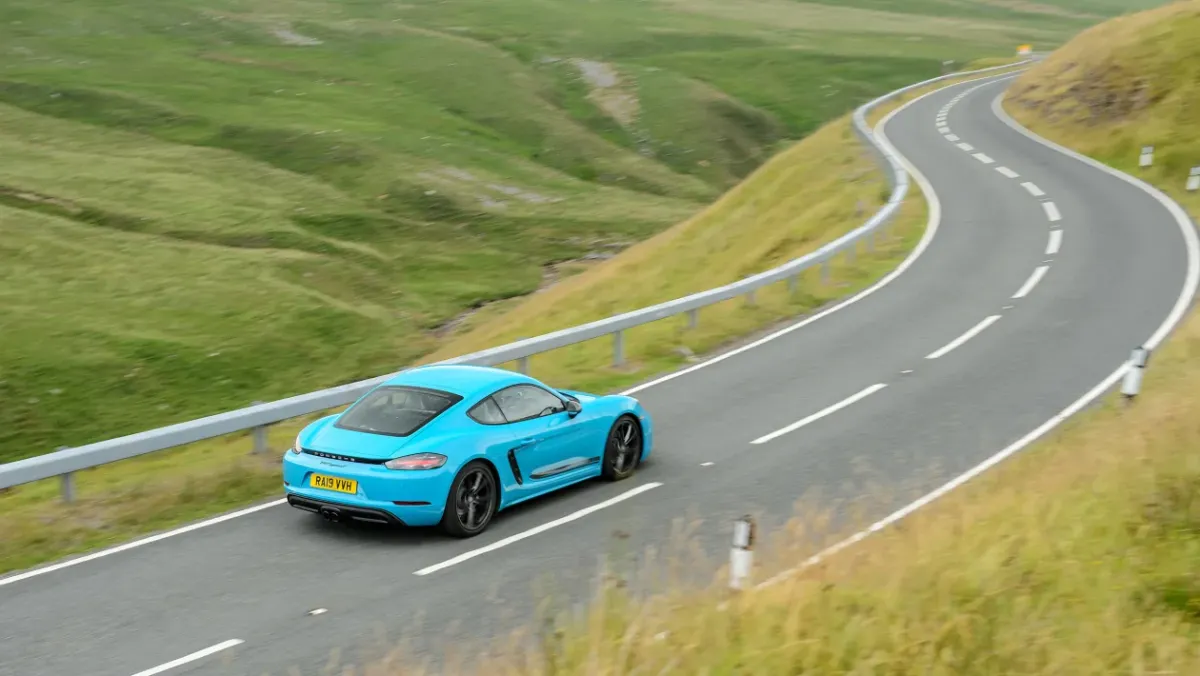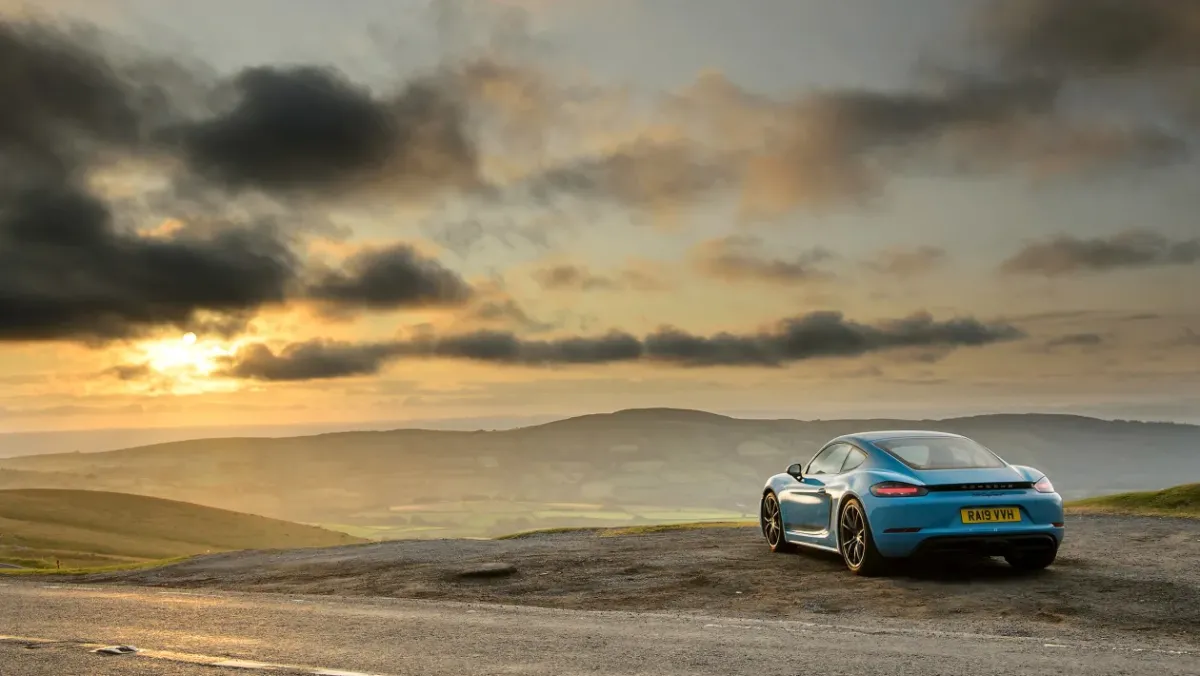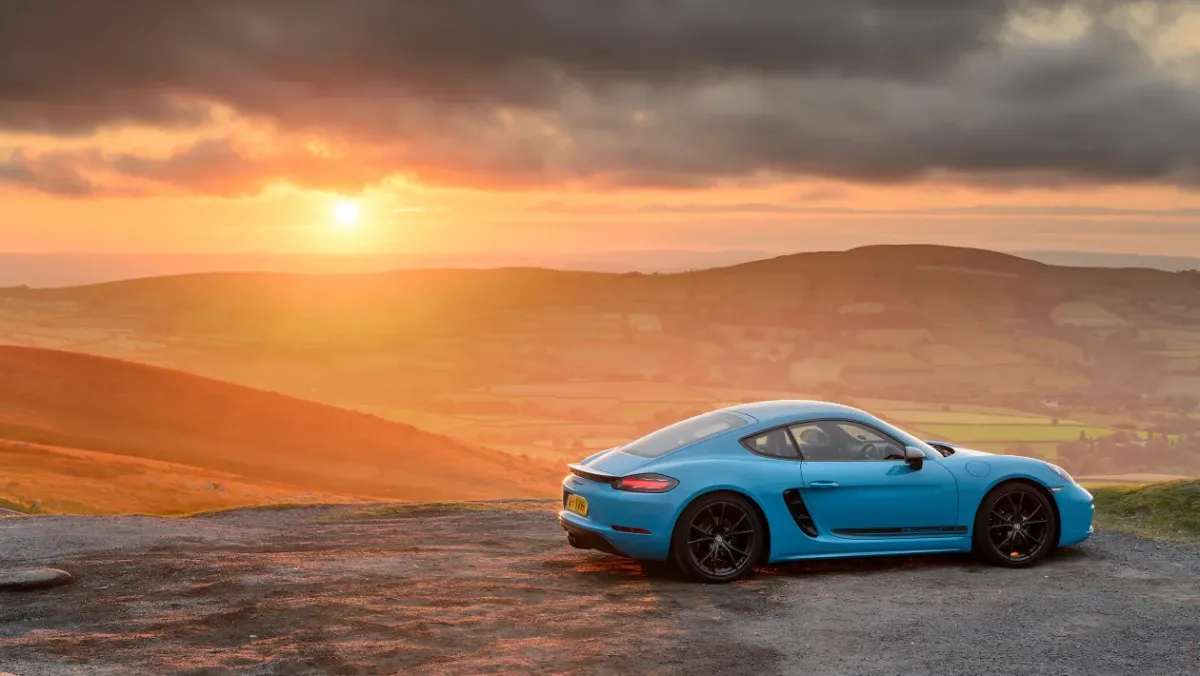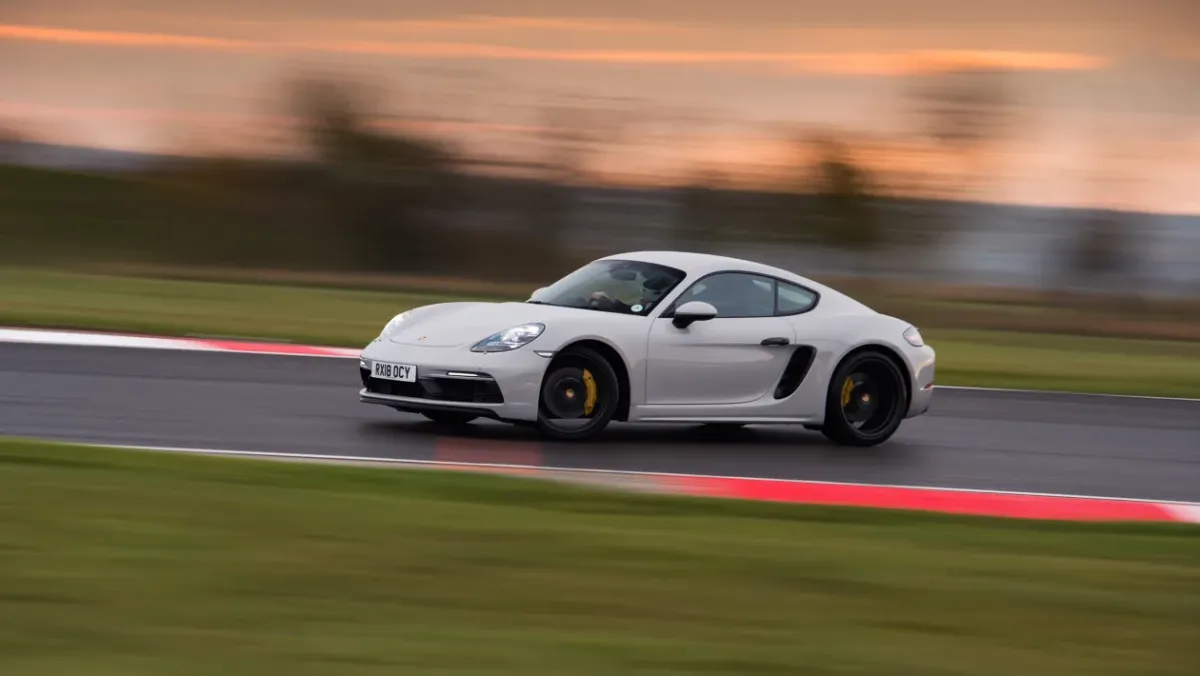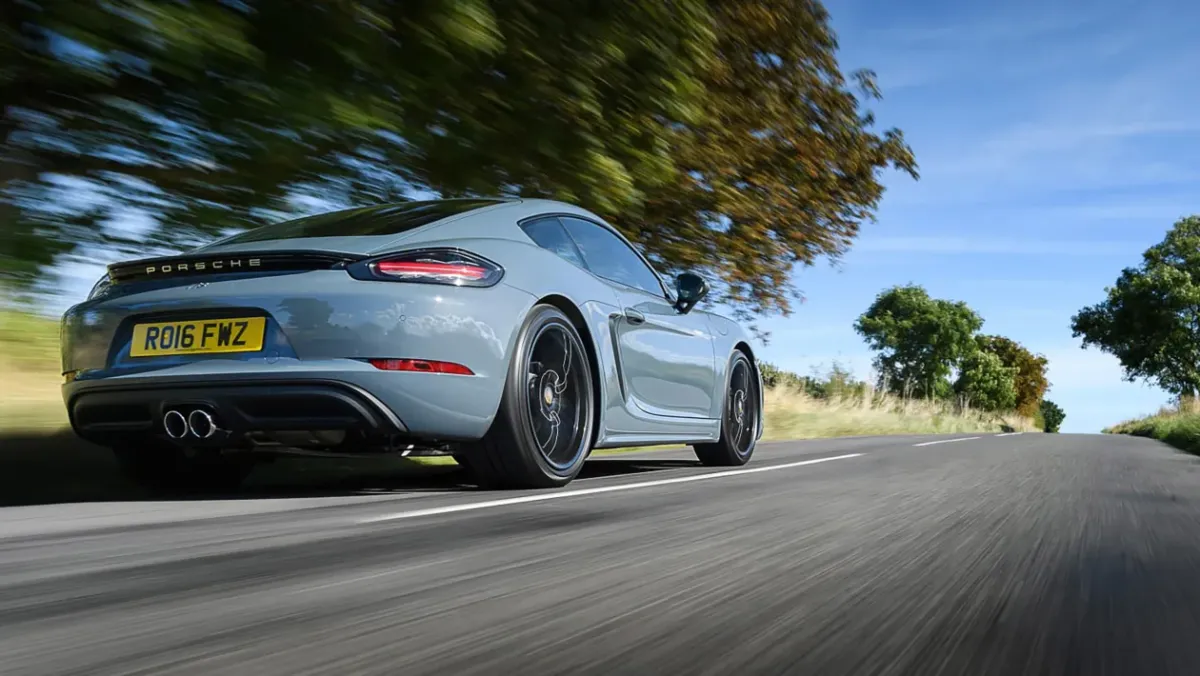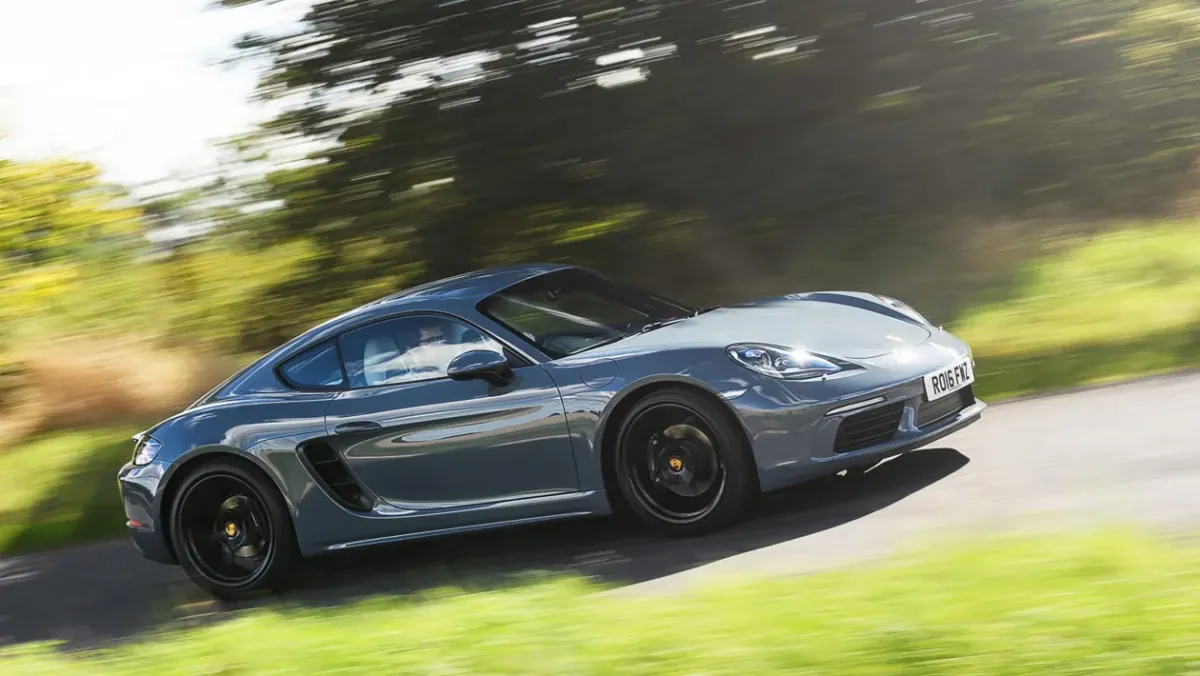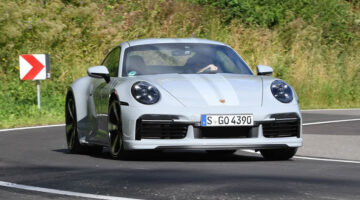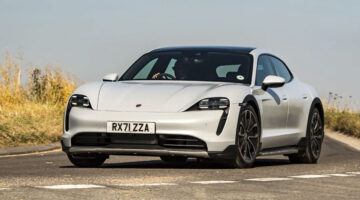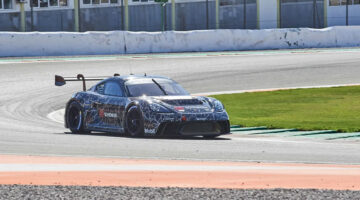Topped by the magnificent GT4 RS, has the Porsche Cayman ever been more desirable?
Is it just us, or has the Porsche Cayman now transcended its ‘poor man’s 911’ image to become a seriously desirable sports car? Sure, it might have something to do with the GT4 and the frightfully good GT4 RS, but in comparison to the 911, which has grown significantly in size and stature, suddenly the 718’s lithe body, simple clean lines and pure driving dynamics seem to have come of age to be all the sports car we could ever need.
It’s not flawless, as the introduction of a pair of turbocharged flat-fours at the lower end of the range does open a significant chink in its technical armour, but the return of six-cylinder motors in the GTS and GT models has been a welcome move. The four-cylinder engines, unsurprisingly, lack character, a captivating noise and the apparent quality of the old units, but the Cayman still appeals in its own right as a magnificently balanced driver’s car.
> Porsche 911 review – is the 992 still the ultimate everyday performance car?
Now, in 2022, the GT4 RS has arrived (along with its six-figure price tag) to not just overwhelm its direct rivals – few as they are – but also form what could just be the best sports car ever. This, together with the GT4’s capability, and the GTS’s daily appeal, makes the Cayman range more enticing than ever for us, despite its obvious age and familiarity.
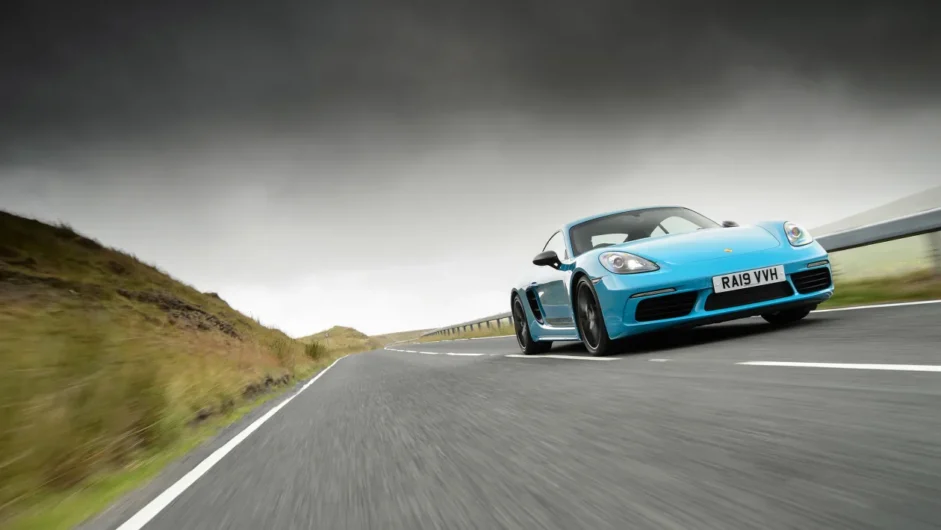
Prices, specs and rivals
Starting at $57,911, the basic Cayman with a manual gearbox sounds like exceptional value, but thanks to a stark standard equipment list it is easy for the price to skyrocket through expensive yet sometimes essential options.
The step up to a Cayman S means sliding over a cheque for $69,490, which not only gets the larger, more powerful 2.5-litre engine, but does add some of the extra desirable equipment that the regular Cayman lacks.
There is a third option with the four-cylinder models though, and that’s the Cayman T. Porsche has done the ‘T’ thing before, and it’s basically Porsche shorthand for a half-hearted attempt at making a slightly more back-to-basics model while adding a few items from the options list as standard. As you’d expect from a back-to-basics Porsche… it’s more expensive than the regular Cayman ($67,304) despite using the same 2-litre engine, though snarkiness aside it’s probably the pick of the four-cylinder Cayman range to drive. The PDK transmission adds $2500 to the cost of the standard and S models, and $2823. to the T.
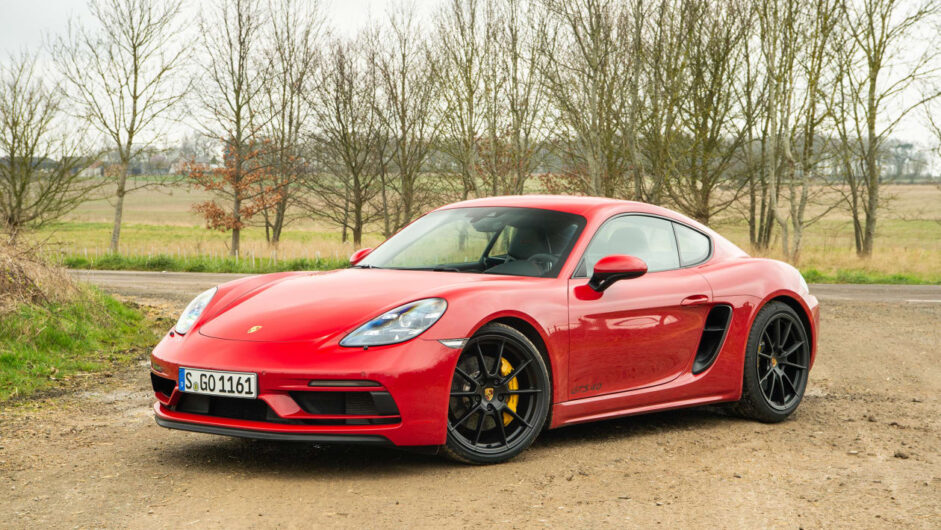
The four-cylinder GTS found its exit when the 4.0 was launched in 2020, and represents the entry point of the Cayman’s more serious derivatives. At $81,780, it doesn’t just pack the bigger powertrain, but also a range of bespoke styling elements, including a very smart set of 20-inch wheels and Sport Design bumpers. Some might see it as a bargain next to the Cayman GT4 which starts at $96,555, but in comparison to the Cayman’s newest model, the $132,870 GT4 RS, it too looks like a total bargain.
In terms of rivals, the small sports car market has seen a renaissance of sorts, but given the spread of Cayman derivatives, so too are its rivals varied. Four-cylinder Caymans have to deal with the recently updated Alpine A110 and A110S, a less substantial and practical sports car, but one with a driving experience that is completely unique and completely beguiling. The four-cylinder Toyota Supra is another potential rival that actually drives with much more finesse than its heavier six-cylinder derivative, but has its own dull powertrain and lacks the Porsche’s crispness.
Direct rival to the Cayman will be the Lotus Emira, but its powertrain and pricing put it somewhere closer to the six-cylinder Caymans, especially considering the V6 and AMG-sourced four-cylinder engine variants are priced at largely the same level. BMW’s M2 is now officially off-sale, meaning that until the new version arrives next year, the Cayman GT4 now has an open goal. However, the M240i has revealed itself to be a great starting point, and at $56,150 is cheaper than even the entry-level Cayman.
This variety makes the sector one of our favourites in the market. For the price, the GTS 4.0 is probably the most serious and is the most compelling as a daily sports car, with the engine being effectively a detuned version of the GT4’s unit. It’s the most practical too, but for some the ageing shape won’t appeal as much as the lines of more auspiciously designed rivals.
Engine, gearbox and technical highlights
The 718 Cayman’s flat-fours are unashamedly boosted, but they do produce some impressive figures. The 2-litre of the Cayman and Cayman T develops 296bhp, while the 2.5-litre makes 345bhp in the S. The peak power for each car comes in at 6500rpm.
The biggest advantage of the new engines is the useable torque they both produce. The standard Cayman makes 280lb ft from 1950 to 4500rpm and the S 310lb ft from 1900 to 4500rpm.
This abundance of torque helps the 718 overcome the one chink in the old Cayman’s otherwise blemish-free armour – its long gearing. The 3.4-litre engine in the old Cayman S only managed 273lb ft at a lofty 4500rpm and so the tall ratios often made it feel a bit gutless in slower corners, or when the engine wasn’t quite on song.
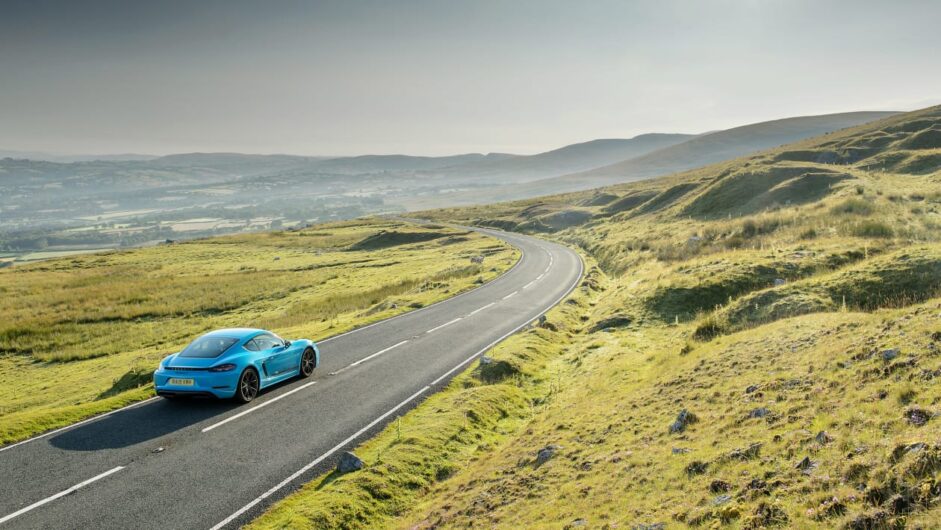
For the torque-rich turbo engines, the lack of low-down muscle isn’t a problem. You don’t necessarily change gear any more frequently than before, given the wide torque bands in each gear, but there’s now less penalty for an early change simply to enjoy the tactile, mechanical action.
With a naturally aspirated four-litre flat-six, there are times when the range-topping Cayman GT4 can actually feel a little flat next to the turbocharged models – when punching out of a tight hairpin, for example.
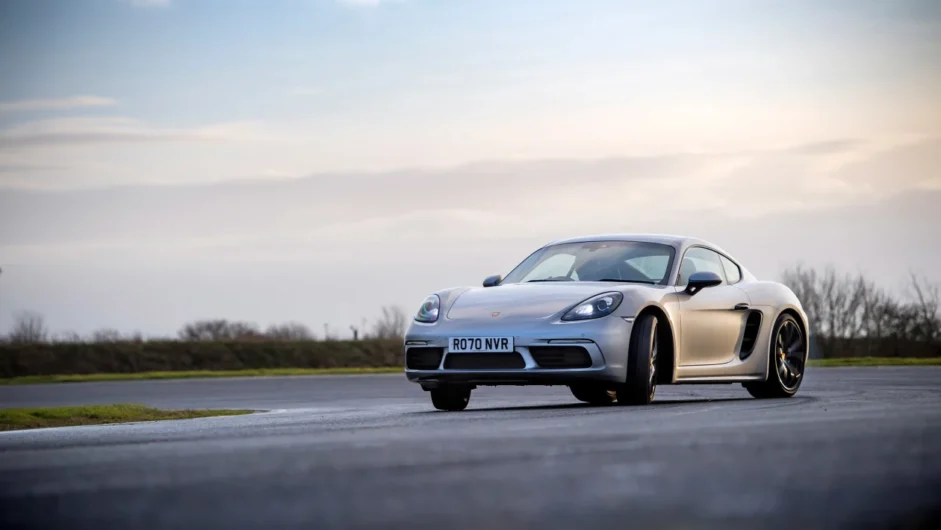
Stick with it, though, and all the sixes come good as their magnificent response and charisma shine through. In the case of the GTS and GT4, their 394bhp and 414bhp outputs need revs to achieve, and both engines don’t reach their fuel cut until 8000rpm. Similarly, they both share a 310lb ft peak torque figure that requires 5000rpm on the clock to achieve, though it does last until 6800rpm, and as a four-litre engine in a relatively light car, there’s of course more shove lower down the rev range. The engine itself is effectively a development of the 3-litre in the 992, albeit without turbocharging.
A six-speed manual is standard, but gearing is once again an issue though – a ’box that can pull 136kph in second gear can only provide you with limited high-rev thrills at legal speeds. The auto rev-matching is useful, and can thankfully be turned off with a button press for those who prefer the DIY method. Porsche’s optional PDK gearbox is one of the best dual-clutch transmissions you can buy. It reacts relatively intuitively left to its own devices, while changes are quick, crisp and aren’t accompanied by an unnecessary wave of torque or an uncomfortable jolt.
The GT4 RS’s engine is something rather different, as its 4-litre flat-six is shared directly with the current 992 GT3, and while its 493bhp power figure is down 10bhp on the GT3, it’s not Porsche’s patriarchal system that informs it, rather a more convoluted exhaust system that now has to traverse the rear axle to find its way out. To make up for this, the GT4’s induction system actually flows through the cabin from intakes that replace the rear quarter glass, making for an even more intense experience. As has become customary in Porsche’s RS range, only a PDK transmission is available, but with shorter ratios and one of the best actions in the entire world, we’re not complaining.
Performance and 0-100kph time
Even in its least powerful form, the Cayman can cover the 0-100kph measure in 5.1sec, with the more focused but no more potent Cayman T recording the same time. Likewise, both have a top speed of 273kph, which isn’t bad for Porsche’s entry-level sports car. Opt for the PDK version and the acceleration times drop by two-tenths, while the Sport Chrono Package (PDK only) cuts that by a further two-tenths.
With a sixth more power, the Cayman S goes quicker still. In manual form it reaches 100kph in 4.9sec, but this is cut to 4.4sec with Sport Chrono and a further two-tenths with PDK. Top speed, meanwhile, rises to 285kph.
This is where the four-cylinder engine range ends, but it’s where unease over the four-cylinder layout begins. Objectively, there’s not a great deal to fault with the flat-fours. Performance has risen, low-down torque has improved (even if the engines are less linear than the old sixes), and when they’re spinning away at high revs, throttle response is still pretty good. They work well with both gearbox options, too, the manual in particular remaining a joy to slot around the gate.
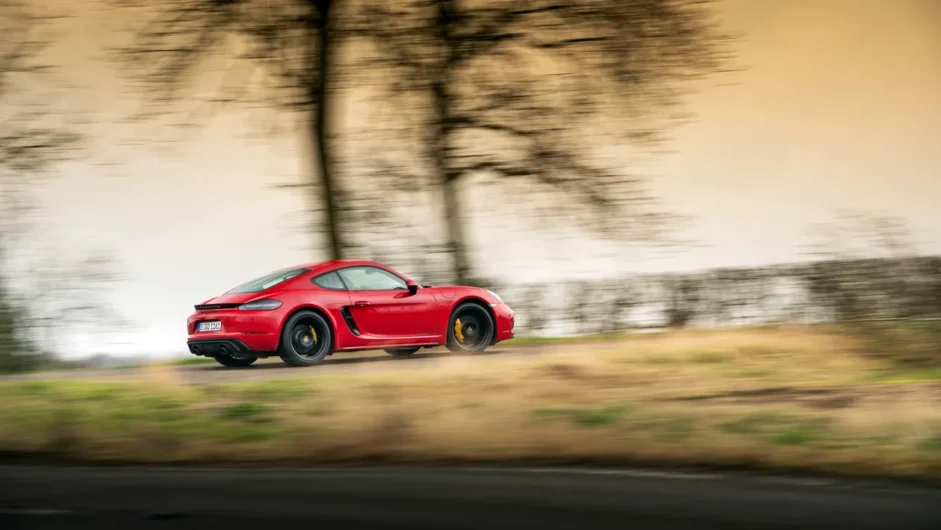
It’s just a crying shame that they sound the way they do. If either engine had the offbeat growl of an old Impreza it might be easier to forgive, but instead both units have a harsh, uncultured tone not unlike that of an old Beetle. And if you specify the sports exhaust, an old Beetle with a blowing silencer.
Better, instead, to move on to the six-cylinder models in the range. Yawning gear ratios – second will get you to 136kph – take the edge off the flat-six’s performance and limit how much of the wonderful sound the engine produces at high revs can be enjoyed on the road. It can also make the Cayman feel slightly slovenly out of tight corners unless you’re prepared to change down to first a lot more often than you would in other cars.
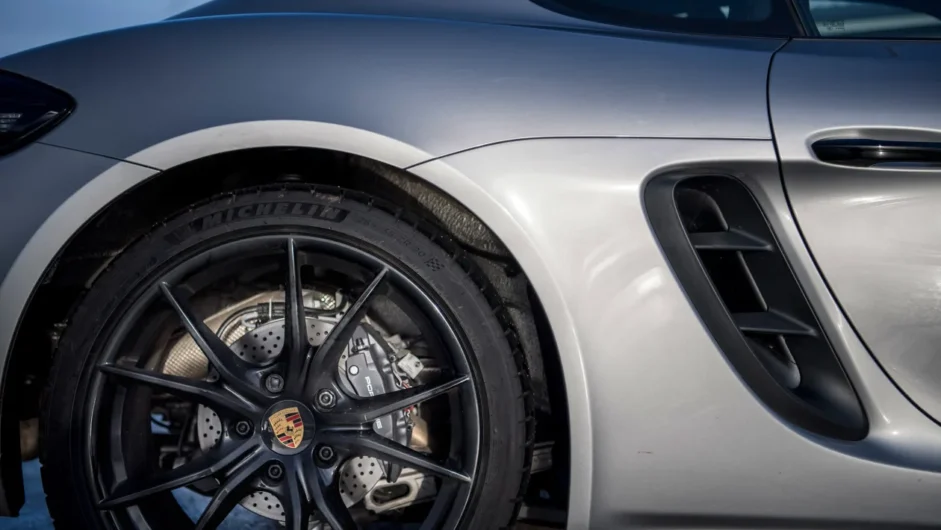
But good lord is the experience worth it when you do. It’s a reminder of why we were so displeased about the move to four cylinders in the first place; the six-pot is smooth, cultured and sharp as a Sabatier-sliced lemon, its power building throughout the rev range to a crescendo by the 8000rpm limiter.
While the gears are long, the gearbox itself is a joy – matched, as always, to a perfectly weighted clutch. Rev-matching on downshifts feels as natural as walking, but if you prefer, you can let the car do that with a switch on the centre console, for perfect heel-and-toe shifts every time. And flat out, on a circuit, naturally, it’s hard to imagine wanting any more performance.
Ride and handling
You’ll be pleased to know that Porsche hasn’t been as dramatic with changes to the Cayman’s chassis as it has been with the engine. The delicate and immersive handling that the Cayman is famous for still exists.
For a start, the 718 isn’t too big. With space on the road you have a greater freedom over where you place the car, and you’re able to choose your line into and around corners. Sounds like a small point, but as cars get bigger it’s one that’s increasingly important.
Everything about the 718 is well considered, whether it’s the ergonomics and seating position or the weight of the steering and the pedals. It’s simply a satisfying car to use, even when being driven slowly. However, the chassis and the damping exudes quality, making the 718 even more entertaining and capable at higher speeds.
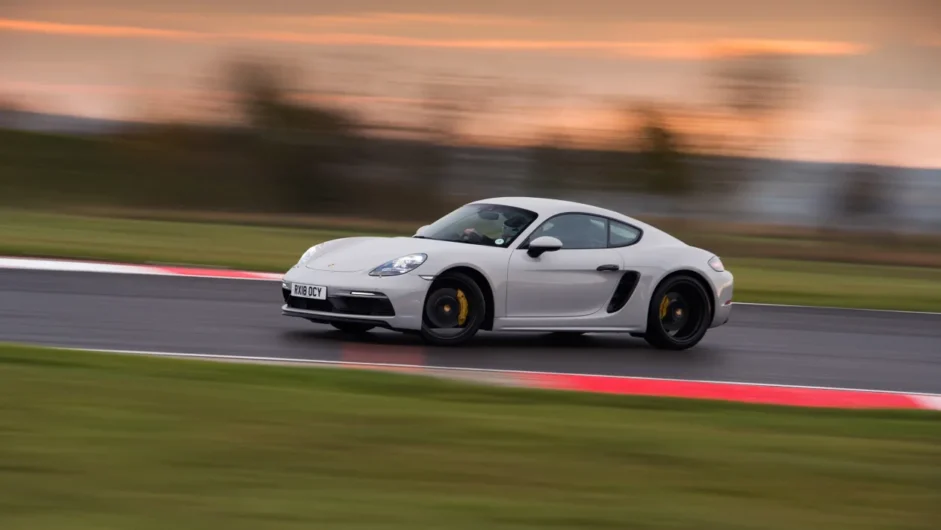
With most of the Cayman’s mass within the wheelbase there’s a real agility to the car. Combined with impressive grip, the 718 is capable of changing direction with ease. There is a slight hint of understeer as you begin to reach its limits, but rather than being frustrating it just helps you gauge how hard you are pushing.
If you spec the optional Porsche Active Suspension Management (PASM) it allows you to stiffen the suspension slightly. The softest setting feels fluid and supple, allowing you to create an easy flow down a twisting road, while the stiffer setting adds a further degree of control and predictability to the Cayman that suits harder driving. Neither of the damper settings feels wildly inappropriate; the stiffer of the two isn’t too firm, and both settings have their place depending on the road or your attitude.
In terms of feel and connection, the 718’s electronic power steering cannot compete with Porsche’s hydraulic systems of old. But there’s enough detail transmitted through the chassis that the supplementary feel you get through the steering wheel is useful, but not actually necessary for you to be truly engaged with the car.
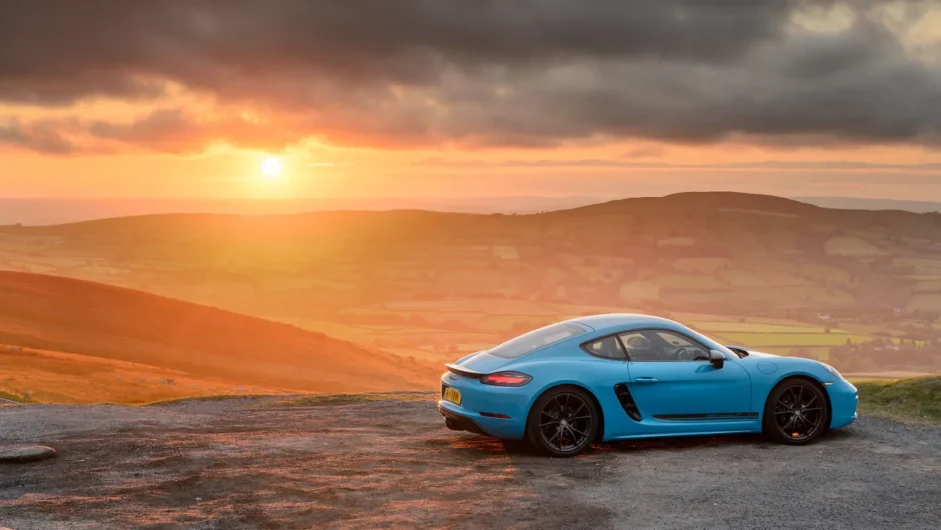
The extra torque from the turbocharged engines really allows you to indulge in the chassis’ balance and poise – possibly even more so than with the old naturally aspirated flat-six. The throttle of the 718 has a greater influence over the car when in a corner, making it easier to push the rear axle closer to the limit of grip, really allowing you to manipulate the car’s attitude through a corner.
What’s possibly even more impressive is that the higher level of ability and focus that comes with the 718 GT4 doesn’t make it any more difficult to exploit. Everything happens at higher speeds, but the Cayman’s natural, wonderful balance remains, and within a few corners on a trackday you’ll probably feel confident enough to switch off all the electronic safety nets and go it alone.
It’s no less entertaining on the road, where despite the Cayman’s hardcore set-up, it’s far from being tiring or harsh. The chassis has been well judged to offer not just excellent body control but also some pliancy in the ride, and the car’s relatively small dimensions and good visibility are no less relevant here than they are in lesser Caymans.
L/100km and running costs
The main purpose of Porsche downsizing the previous Cayman’s flat-six engines to turbo fours was to reduce emissions in the wake of tightening CO2 regulations. A move to WLTP testing since the 718 was introduced means it’s more difficult now to compare figures with the old sixes, but a figure of up to 8.5L/100km for a PDK Cayman and 8.3L/100km for the manual should be enough for most buyers.
The Cayman S is barely less frugal despite its extra capacity, Porsche quoting 9.1L/100km for the PDK and 9.7L/100km for the manual. Emissions, meanwhile, are still calculated on the old NEDC testing cycle, and range from a low of 180g/km for a PDK Cayman, to 210g/km for a manual Cayman S.
With those changes to WLTP regulations, the numbers are also more realistic than before, and in normal, mixed driving, a figure in the low 30s shouldn’t be too difficult to achieve in any turbocharged Cayman – though it also shows how much weight and size play a part, as an Alpine A110 with similar performance is capable of more than 7L/100km in similar driving.
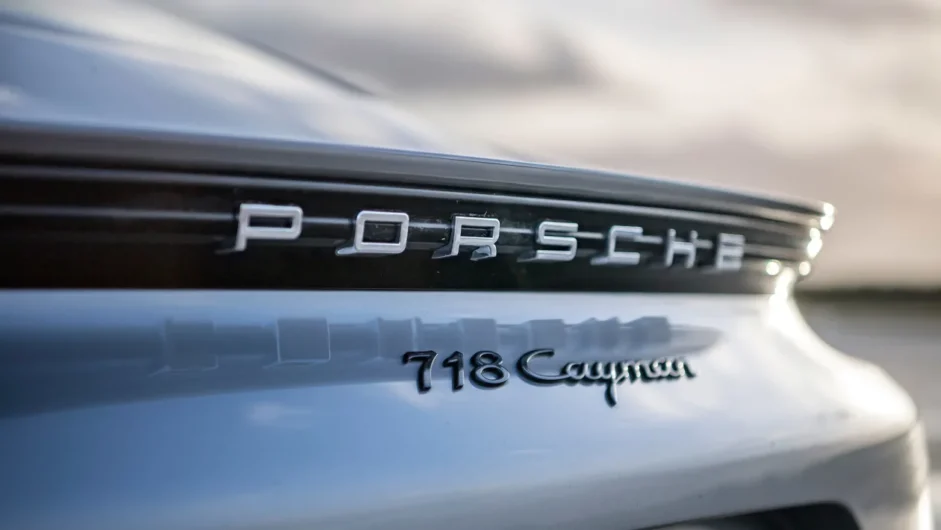
That said, in context of its other rivals, the 718’s overall consumption is still pretty good. Less so in context of its predecessor, which could also register numbers in the low 30s in mixed driving, but that’s one of the more awkward truths of the latest wave of downsized engines…
Porsche servicing can be on the expensive side, though a 36-month, unlimited mileage warranty should offer peace of mind.
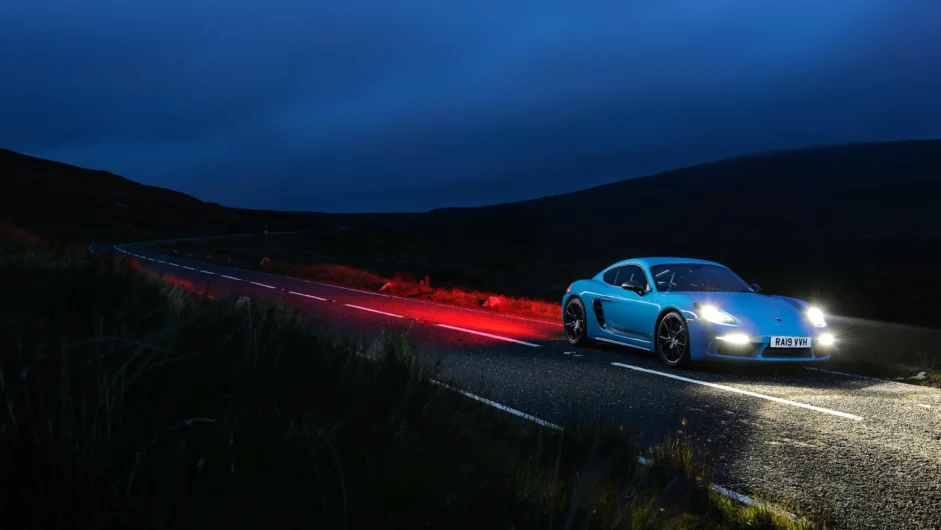
Six-cylinder GTS and GT4 models aren’t actually that much less efficient despite a huge increase in swept capacity, ranging between 11.3 and 10 L/100km depending on transmission – this is perhaps the only use of those yawning gear ratios. GT4 RS models and their significantly shorter gearing do wreak havoc on the L/100km number, but no one’s buying a GT4 RS for its fuel efficiency. Still, 13.2 L/100km doesn’t seem too bad.
Tyres will vary from model to model. You’re looking at around $450 for a pair of Goodyear F1 Asymmetric 2s or $500 for equivalent Michelin Pilot Sport 4 Ss for the 235/35 ZR20 fronts, and $505 for the rear Goodyears and $595 for the rear Michelins in 265/35 ZR20. Those sizes are representative of a Cayman T, and all prices are fitted, delivered by Blackcircles.
Interior and tech
Always surprisingly practical for a mid-engined sports car, the Cayman’s front and rear load areas are plenty big enough to swallow everything two people could want on a weekend away. The rear deck above the engine and behind the occupants’ heads provides extra useful space for small items, too.
This being a Porsche, ergonomics are spot-on with all the controls perfectly positioned and weighted with a quality feel. The driving position is suitably low and from behind the 918-inspired steering wheel the dash layout has plenty of traditional Porsche touches such as the high-mounted gearlever, and a rev counter right in the centre of the dials.
Materials and build quality are top-notch, although despite the upgraded infotainment system inherited from the 911, rivals such as the Audi TT make the tech feel distinctly last generation. In typical Porsche style most of the truly desirable features reside on the options list, but there’s enough to customise to turn even a basic Cayman into pretty much your perfect car.
Don’t even get us started on Porsche Exclusive Manufaktur and its range of interior options and endless paint-to-sample shades. It’s expensive, and perhaps something buyers of standard Caymans might shy away from, but could you resist on a GT4?
One or two models in the Cayman range do forge their own path anyway, the aforementioned GT4 getting standard bucket seats and Clubsport Package options such as a bolt-in cage and a fire extinguisher. The Cayman T is appealing lower down the range too, with a unique seat trim pattern, and pull-strap door releases like on Porsche’s GT models.
Design
The Cayman might not have the iconic profile of its 911 sibling, but even from the briefest glance it’s instantly recognisable as a Porsche, and a decade and a half after the first Cayman was introduced, the shape is also now a mainstay of the Porsche range.
When the 718 updates arrived, the Cayman took on arguably its most attractive form yet. Already a well-proportioned shape, the slightly squared-off details and neatly redesigned rear tail light arrangement gave it a unique character as well as an attractive shape. Importantly, it’s no slavish copy of a 911, but a distinctive car in its own right.
While little visually separates the Cayman and Cayman S, the Cayman T is slightly more distinctive with a unique graphics package and a set of wheels from the options list, and snags the twin-pipe exhaust from the Cayman S rather than the regular car’s oblong pipe. The GTS goes further, with more definition to its bumpers and side skirts and separated rear pipes like on the GT4 above it.
The GT4 models are, naturally, the most striking though. The deep front and rear aprons are more like those of the 911 GT3s above, as is the vent below the trailing edge of the front compartment, while you can’t fail to miss the enormous wing perched atop the rear deck. The side vents are also more prominent, while cars with the Clubsport pack will allow a sneak peek of the cage through the windows, too. The looks may differ only slightly from those of the old car, but the ‘racer for the road’ attitude is as strong as ever.
GT4 RS models build on this motorsport-like aesthetic with even more aggression, utilising bespoke carbonfibre panels to great effect with new grilles, slip vents and even a pair of bonnet-mounted NACA ducts. The taller rear wing has swan-neck mounts, just like those on a GT3, and the rear glass now no longer shows off a carpeted panel, but a visible engine cover that integrates the intakes that pick up air from the new high-mounted intake vents. Combine all these elements with those stunning new centre-lock wheels (Porsche’s familiar magnesium items are optional) and the RS looks and feels worth every bit of its price tag.
This article originally appeared at evo.co.uk
Copyright © evo UK, Dennis Publishing

